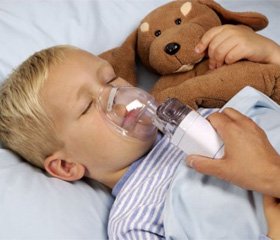Журнал «Здоровье ребенка» 1 (44) 2013
Вернуться к номеру
Sudden cardiac death of children (Part 1)
Авторы: Pshenichnaya Y. - Donetsk National Medical University of Maxim Gorky, Donetsk
Рубрики: Медицина неотложных состояний, Кардиология, Педиатрия/Неонатология
Разделы: Справочник специалиста
Версия для печати
This article presents the prevalence, terminology, classification of sudden cardiac death. A description of congenital structural heart diseases associated with a risk of sudden cardiac death is given. The issues of etiology and pathogenesis of life-threatening conditions are described in detail.
sudden cardiac death, children.
Sudden death makes up about 5% of all child deaths (frequency is from 1,5 to 8,0 per 100 000 per year). According to calculations from 5000 to 7000 outwardly healthy children in the U.S. die suddenly each year. According to autopsy researches, to the sudden cardiac death (SCD) go 2,3% of deaths under age 22 and 0,6% – at the age from 3 to 13 years. SCD of children with heart pathology makes up from 1 to 13 per 100 thousand people.
Despite the considerable efforts made in the world to solve the problem of sudden cardiac death through the last 30 years any significant success in the aspects of its prediction and prevention has not been yet achieved. Unexpected deaths sometimes occur under dramatic circumstances, and often have medical and legal consequences. Some of these deaths are unavoidable and unpredictable at the present time, but in many cases there are alert clinical symptoms, the burdened family history of sudden death at young age, changes in the electrocardiogram. A child with a really normal heart has no risk of sudden cardiac death. An important task is to identify outwardly healthy children, but with different abnormalities of the cardiovascular system and the risk of sudden cardiac death.
The term "sudden cardiac death" denotes the case of death of a person being before in a physiologically and psychologically stable state, occurred within 1 hour from the onset of acute symptoms of the disease, with no signs that allow of giving another diagnosis. In ICD-10, SCD has the following codes: I 46.1 – sudden cardiac death; I 44 – I 45 – sudden cardiac death by conduction disturbance; I 21 – I 22 – sudden cardiac death by myocardial infarction.
Among young adults sudden death occurs in 20% of cases during exercising, 30% – during sleep, 50% – under different circumstances in the period of wakefulness. The basic mechanisms of SCD are not fully discovered, although some stages of tonatogenesis are clear enough. The immediate cause of death of older children and children with organic pathology, regardless of age in 80% of cases is ventricular fibrillation, often provoked by ventricular tachycardia, rarely – by bradycardia and asystolia, in younger age groups in 88% initially asystolia is registered.
Sudden death of children is presented by: sudden infant death syndrome, SCD of children with known heart diseases, SCD of children considered healthy when life-threatening condition is the first symptom of the disease. Sudden death as a result of cardiovascular disease is a special section of cardiology. Predisposing factors that lead to the life-threatening condition may include: congenital and acquired abnormality of the cardiovascular system, ischemic myocardial affections, disturbance of myocardial excitability and conduction.
Sudden cardiac death due to congenital structural heart diseases is recorded with high rates in children population and accounts for about 5% of all deaths among children. Of patients with congenital heart disease most at risk are those whose structural abnormalities of the heart cannot be fully corrected by surgery. Residual defects are revealed by the overload by pressure and volume of the right and left ventricles, meanwhile the affected cameras become dysfunctional and prone to life-threatening arrhythmias.
To congenital heart disease which has a high risk of sudden infant death syndrome, include: tetralogy of Fallot, aortic stenosis, transposition of large arteries. In addition, the most at risk are the patients with high pulmonary hypertension (primary pulmonary hypertension or syndrome Eisenmenger).
Hypoplastic left ventricle syndrome is a group of anomalies of heart development, characterized by hypoplasia of the left ventricle, atresia or stenosis of the aortic and / or mitral valves, and hypoplasia of the ascending aorta. During the surgical correction the division of pulmonary and systemic venous circulation is performed. The frequency of SCD during Fontan operation is 5-7%.
Endocardial Fibroelastosis is a disease that occurs in young children and is characterized by thickening of the endocardium with proliferation of elastic tissue. Endocardial fibrosis is the cause of cardiac failure and various types of arrhythmias.
Hypertrophic cardiomyopathy is a primary myocardial disease of the unknown etiology characterized by symmetric or asymmetric hypertrophy of the myocardium of the left ventricle and interventricular septum. Probable causes of sudden death by hypertrophic cardiomyopathy: disturbance of intracardiac hemodynamics, ischemic changes in the myocardium, life-threatening arrhythmias. These factors are closely interrelated.
Dilated cardiomyopathy is characterized by dilatation and limitation of the function of the left or both ventricles. Dilated cardiomyopathy of 30-50% of patients ends with sudden cardiac death, the cause of which is pronounced fibrosis of subendocardiac layer of the heart wall, leading to ventricular dilatation and emergence of ventricular tachyarrhythmias.
Arrhythmogenic right ventricular dysplasia is one of the most common causes of SCD of people under 35 years old. In many cases the disease manifests itself with sudden cardiac death due to myocardial ischemia, which is developed against the background of anomalies or organic changes in the coronary vessels.
The questions of verification of the structural foundations of the SCD, methods of forecasting it and allocation of modifying groups at high risk, the problem of prevention and treatment, selection of appropriate antiarrhythmic therapy and monitoring of its effectiveness necessitates a further search for their correct solution.

